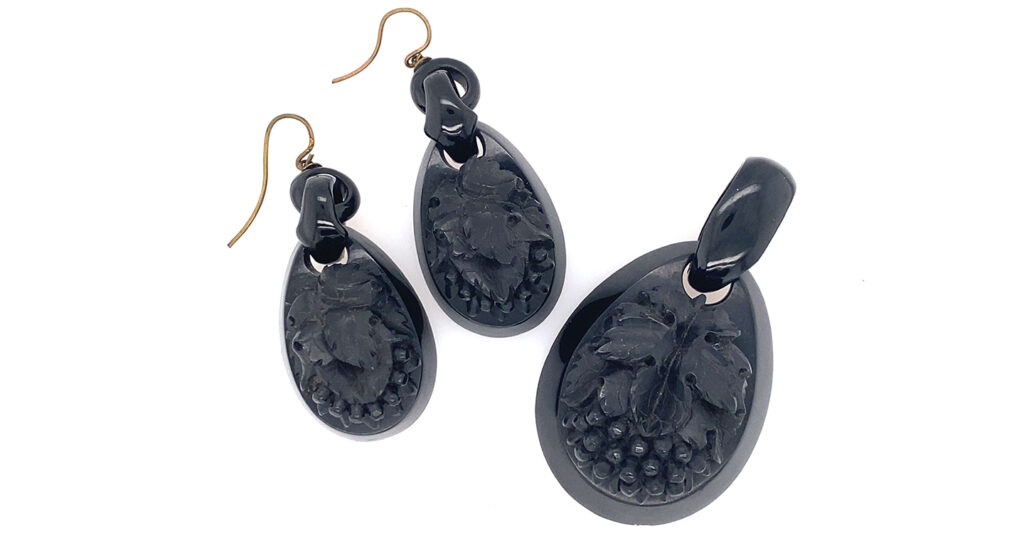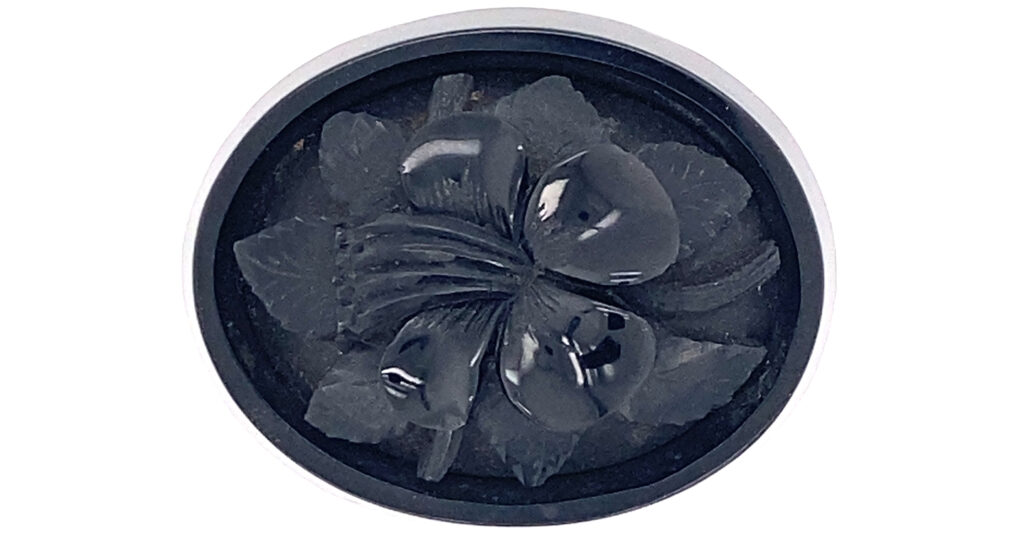Discover Whitby Jet
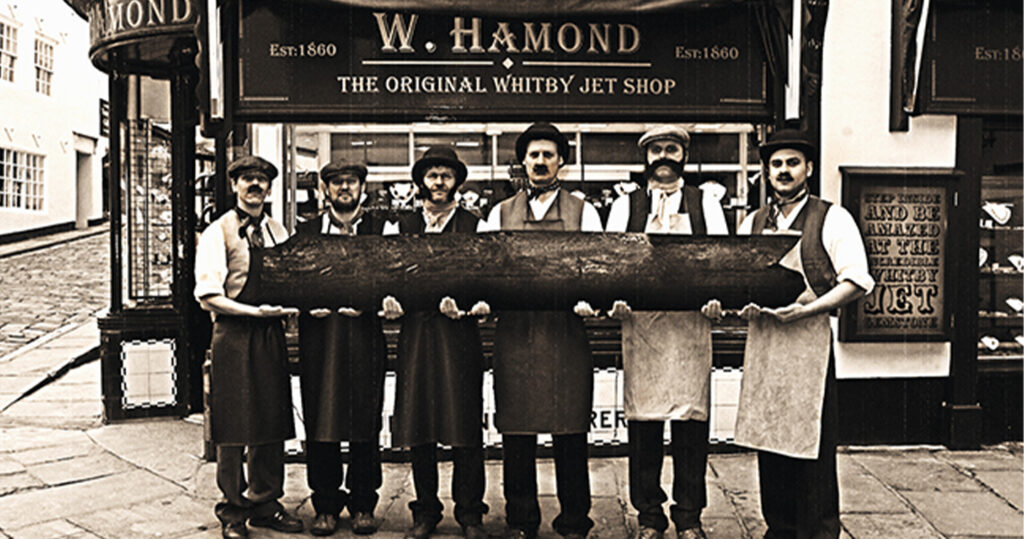
Whitby Jet is the highest standard of jet produced in the world. 19th century jewellery produced using the material offers an insight into understanding the social, romantic, scientific and psychological behaviours of the Victorians.
In this collaboration with the Museum of Whitby Jet and W. Hamond, this series will detail the history of the Whitby Jet industry, the importance of botany and ‘floriography’ in the 19th century and the symbolism of the jewels produced in Whitby for the sentimental Victorians.
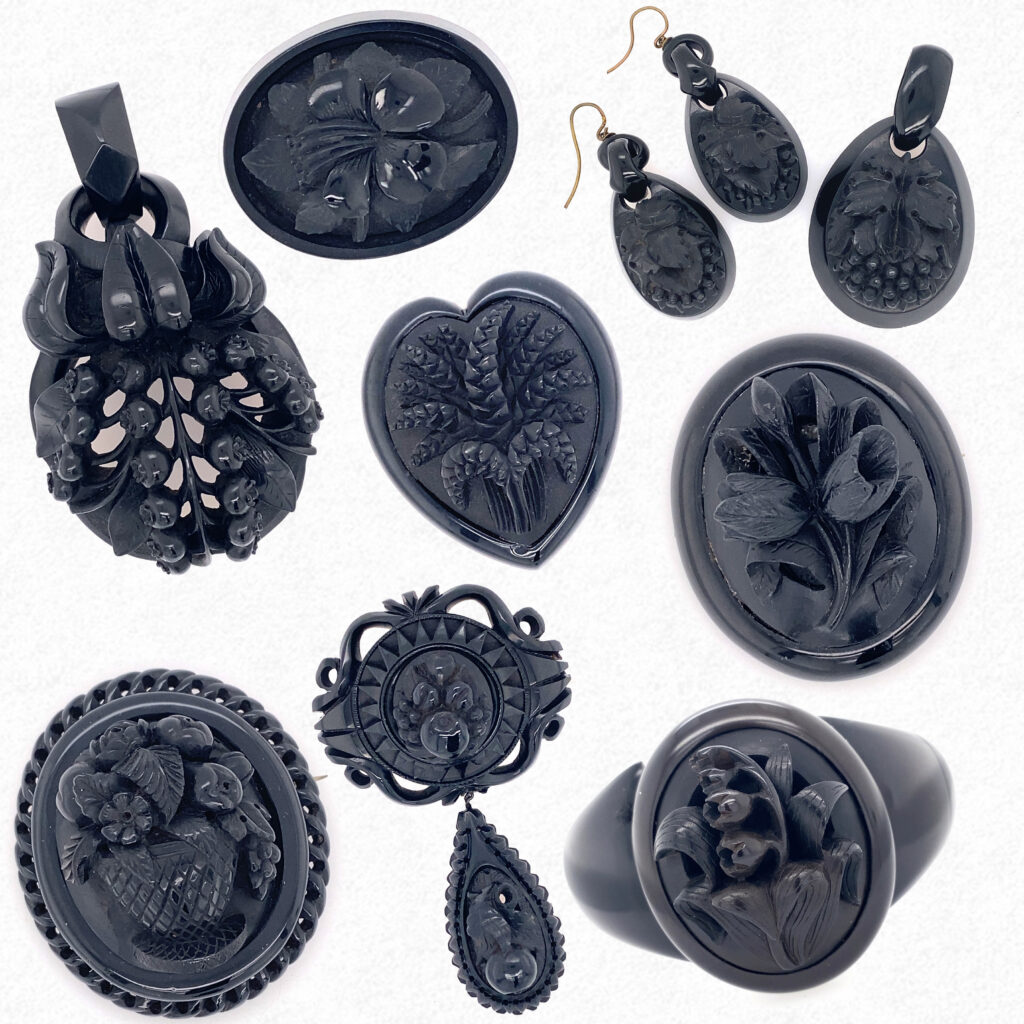
The reason for this is the abundance of jewellery designs that were used for mourning and sentimental purposes, becoming tokens and trinkets of love, or simply a memento of a vacation. Mandates in the quality of jet used came from Queen Victoria herself, stating that:
“Irish bog oak is Irish bog-oak without laying claim to any finer name ; but vulcanite simulates jet, and the wearer of a vulcanite chain, or of a black varnished bit of wood out into the form of a cross, intends you to take her sham for jet, and if you innocently assert the baser manufacture you are supposed to cast a slur upon her means, as well as on her taste. But the fact exists, despite the slur.
Doubtless all this baser kind of art-work may be good from an industrial and commercial point of view ; but it is ruining the taste and the artistic honesty of the nation.”
Queen. Herald & Weekly Times. ‘THE LADIES’ COLUMN’ in The Weekly Times, October 16, 1869
Link > Watch the video on the history of Jet and Similar Materials
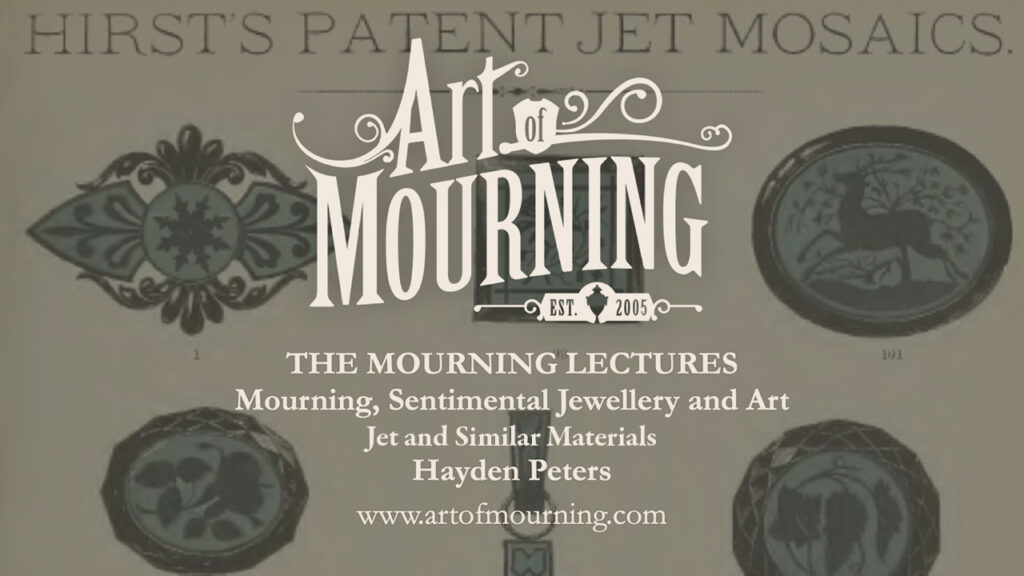
Because of this immense popularity, Whitby Jet was carved and turned into all manner of favourite Victorian styles. The rise of Romanticism correlates with the rise of the Industrial Revolution, as the romantic ideal of chivalric behaviour in love and relationships forged the foundations of the ‘Victorian’ family’ unit. A strong loving bond between the parents and imparting these values to their offspring, offered solid boundaries of respect, which also were maintained by the church and state. A solid family bond in Queen Victoria’s family was the template for the public to follow, which was only made stronger, as Victoria was the Supreme Governor of the Church of England.
Strong family ties and better access to new wealth allowed middle class families to take advantage of the new transit system throughout England during times of leisure, making small towns with excellent craftspeople, like Whitby, the premier places to purchase, gift and wear trinkets of love back in their homes.
The growth of the jet industry is related to Victoria’s mourning and its popularity of black fashion. Jet, a type of lignite or coal, has been used in jewellery since the Bronze Age, as it is a relatively malleable material and mined or found in rocky outcrops. Its initial origin in 19th century manufacturing was at Carter’s House in Haggersgate c.1808, leading to the growth of 10 more shops. These stores had their specialties, from crosses, beads to snuff boxes.
Transit through England grew exponentially in the early 19th century, with rail opening up regional areas to tourists. This established the reemergence of cottage industries, which had been largely appropriated by the Industrial Revolution. Whitby’s rail system was built by George Stephenson in 1836, costing £120,000. Initially, this was horse drawn and the steam locomotive was introduced in 1845. For a growing industry and for a business to expand its wealth, the influx of people into an area is essential to generate interest in a product, but also is fast expediting of the goods, to retail them regionally and internationally. Whitby thrived as a holiday destination and the jet mined there allowed many successful businesses to thrive.
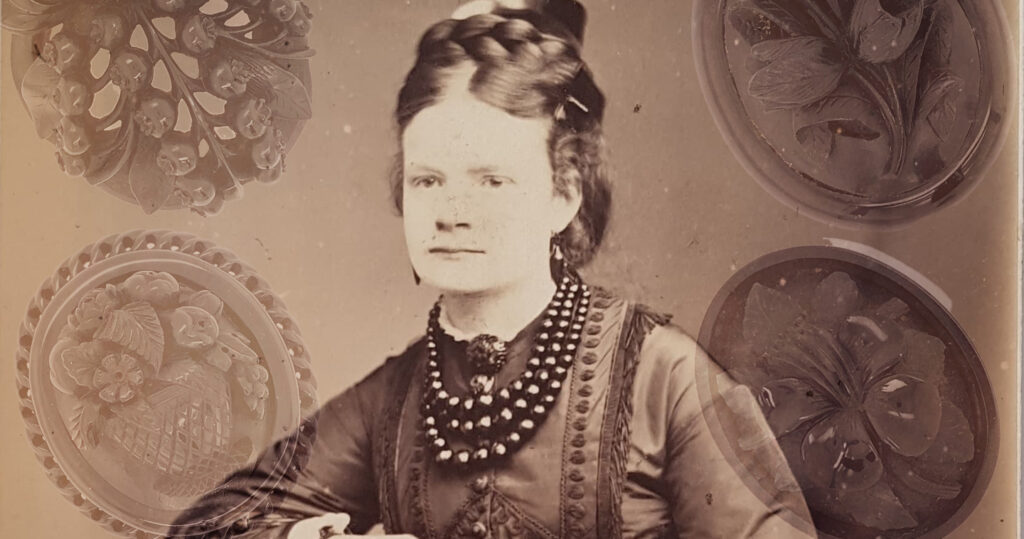
Successful jet businesses in the mid 19th century grew their capital and increased their workforce, with George Bryan’s business employing 170 men in 1873. Their retail presence grew throughout Britain and Europe, with stores in London, Brighton, Leeds, Liverpool, Paris and Amsterdam.
“The peak years lasted from 1851, the year of the Great Exhibition, to 1874. The value of the trade was given as £45,000 in 1860 rising to £100,000 in 1873 and in that year the manufacturing shops numbered 200, employing about 1500 men.”
Muller, H., Muller, K.,. 2009. Jet. Shire Library. London, p. 36.
Considering that the United Kingdom’s gross national product at factor cost of £1,221,000,000 during the 1880s, £100,000 was a massive sum for the period. A reaction against mourning customs and fashion began in the 1880s, with a 20 year period of Victoria’s mourning being challenged by other popular designs in jewellery and fashion. Decline of demand for black jewellery in mainstream fashion would impact the businesses of Whitby and its commerce.
“The war, besides cutting off the supply of these imitations, has thrown the nation into mourning, and thus greatly increased the demand for black ornaments. The industry was most prosperous in the period from 1850 to 1880, when it gave employment to some 1,500 men and boys. The jet mined at Whitby is said to be much superior to that produced in Spain, much of which in former years, was brought to Whitby to be manufactured. Most of the workers now charged in carving, turning and polishing jet in the Whitby factories are old men who learned their trade in the days when the industry was at its height.”
Telegraph Newspaper Co. Ltd, (1872). ‘WHITBY JET INDUSTRY’, in The Telegraph (Brisbane), September 19, 1917, p.5
From its humble beginnings to its enormous height, the jet industry of Whitby is a perfect example of those who could exploit grief for profit. The greater the demand, the greater the education in turning, polishing and carving jet, as well as mining it. With its rapid decline, the interest in jet from World War I and the outpouring of grief was a short revival of the material, but not enough to lead to a growth in business or education in manufacturing. As stated in The Telegraph, most ‘…of the workers now charged in carving, turning and polishing jet in the Whitby factories are old men who learned their trade in the days when the industry was at its height.’




